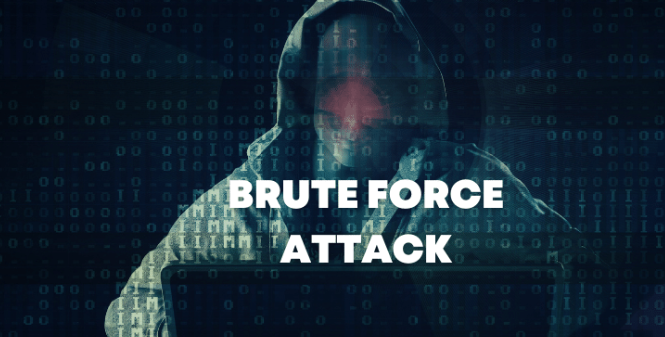Brief Insight to Brute Force Attack, Types & Prevention
A brute force attack can break passwords, login credentials, and encryption keys by using a trial-and-error approach. A brute force attack is a foolproof method for breaking into private accounts and company networks. The hacker will try various combinations of usernames and passwords, usually with a computer, until they succeed in logging in.
Attackers' overly vigorous attempts to breach security have given rise to the term "brute force." Hackers still frequently employ brute force assaults, despite the fact that they are an antiquated strategy. Let's learn more in detail!
Different Brute Force Attack Methods
It's possible to steal user information and obtain illegal access using a variety of brute force attack methods. Here are they:

Simple
A brute force attack is the simplest form of cyberattack, in which the hacker tries every possible combination of a target's login information to get access. This is usually done using a combination of a password and a PIN.
Many users still use insecure passwords like "password123" or "1234" or engage in poor password hygiene by reusing passwords across several online accounts, making these attacks easy to execute. Hackers may easily guess passwords if they know a little about the target, such as their favorite sports team.
Dictionary attacks
These are the most elementary kind of brute force hacking, in which the hacker chooses a target and then tries every conceivable password on that user's login. While the assault is not a brute force attack, it may be a valuable tool for a malicious user.
The term "dictionary attack" was coined to describe the practice of hackers changing words in dictionaries to include random symbols and digits. Launching such an attack takes a long time, and the odds of success are minimal compared to more modern approaches.
Hybrid Brute-Force Attacks
When a hacker employs both a dictionary attack and a standard brute-force assault, they are launching a hybrid brute-force attack. An attacker who has already gained access to a user's username can then use a mix of dictionary attacks and straightforward brute-force techniques to crack the account's password.
A dictionary of possible phrases serves as a jumping-off point for the attacker, who then tries out various permutations of letters, numbers, and symbols until they discover the correct password. Through this method, hackers may learn passwords that mix recognizable nouns with arbitrary numbers and dates.
Reverse Brute Force Attacks
In a reverse brute force assault, the attacker already has some information about the target's password, usually obtained via a security breach. They put the passphrase to work by scouring databases of millions of user names in search of a match. A database of usernames might be scanned for a game using a frequently used weak password, such as "Password123."
Fabricating Credentials
Credential stuffing is an attack that capitalizes on poor password hygiene on the part of users. To obtain access to other accounts, attackers save stolen username/password combinations and try those combinations on other websites. To make this strategy work, users must use the same username and password consistently across all accounts.
How to Prevent Brute Force Attacks?
Employ Stronger Password Procedures
The best strategy to guard against password brute force assaults is to make passwords as difficult as possible to crack. This will make it more difficult and time-consuming for attackers to guess their passwords, which may result in their abandonment of the effort.
Utilize multi-factor authentication (MFA)
Adding authentication to a user's login removes the reliance on passwords. After a person enters in with their password and MFA is enabled, they will be required to give further proof that they are who they claim to be, such as a code delivered by SMS. This prevents unauthorized access to a user's account or company system, even if the hacker has the user's login credentials.

Limit login attempts
Reducing the success rate of brute force assaults by limiting the times a user may re-enter their password credentials. Preventing another login attempt after two or three failed logins might dissuade a prospective attacker, while permanently locking an account after many failed login attempts prevent a hacker from trying username and password combinations.
Use CAPTCHA
By now, everyone is accustomed to CAPTCHA prompts when using the internet. No one enjoys deciphering what looks like a two-year-old drew it, but automated bots may be stopped with the help of technologies like the CAPTCHA.
Even though hackers have started employing optical character recognition tools to bypass this safety precaution, requiring users to enter a single phrase or the number of cats on a created image is quite effective against bots.
Ending Up!
In the advent of cybercrimes, a brute force attack is an action that comprises repeating sequential efforts of trying numerous password combinations to hack into any website. But you no need to worry! Because cWatch Comodo is here for the best help. With years of experience, they protect enterprises from brute force assaults.
They also help organizations to spot strange or anomalous behavior and differentiate between malicious and benign conduct.
Why Wait? Connect them for the best help when dealing with cyber attacks!





